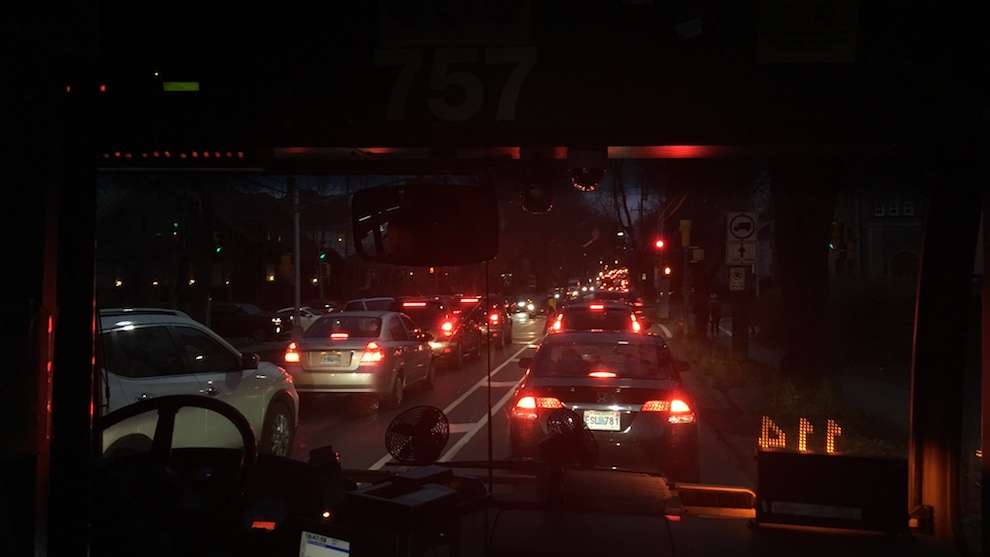City Hall
HRM to prioritize transit, cycling with Integrated Mobility Plan
Changes coming to transit system, sidewalks and bikeways

caption
Members from the Ecology Action Centre and Halifax Cycling Coalition gathered outside city hall Tuesday morning to rally in support of the plan.
caption
Rod McPhail speaks with reporters after Committee of the Whole voted to pass his motions.Rod McPhail wants to change Halifax’s “car culture” with the Integrated Mobility Plan, but he said it’s going to take much effort from regional council.
After several hours of discussion, Halifax regional council voted unanimously Tuesday to adopt all of the IMP’s 137 recommendations.
This means the IMP will be a guiding framework for future transportation plans in the Halifax Regional Municipality. The plan calls for dedicated bus lanes, better sidewalks, a bicycling network and a commuter rail in Halifax within the next 10 years or more.
Councillors and those in the public gallery applauded after the vote. Related stories
“It was amazing to get unanimous support,” McPhail said to reporters after the vote. McPhail was hired by HRM to lead the transportation plan for the municipality and says the IMP is a “big move” for Halifax.

caption
The Ecology Action Centre and Halifax Cycling Coalition rally outside City Hall Tuesday morning in support of the IMP.The 176-page document outlining these recommendations was prepared by McPhail’s team, McPhail Transportation Planning Services Inc., and HRM staff.
“Most of the feedback I’ve heard anyway, is can we do this quicker? That is a good problem folks, to have,” said Dartmouth Centre Coun. Sam Austin during the meeting.
The plan’s main goal is to reduce the percentage of trips made by cars, trucks or vans to 70 per cent by 2031. It also calls for more walking, biking and public transportation options in the HRM. But, current statistics showing the percentage of car, truck or van drivers in Halifax has increased from 65.1 per cent in 2006 to 70.4 per cent in 2016.
McPhail gave a lengthy presentation on Tuesday, hitting on key action items in the IMP, including the management of traffic congestion on major roads.
Other highlights include:
- Implementation of Transit Priority Corridors for buses to bypass traffic
- Introduction of dedicated bus lanes and priority signal lights
- Further discussion of possible commuter rail services
- Completed sidewalk connections for Herring Cove Road and Dutch Village Road
- On-street parking spaces for floating car share vehicles
- Facilitation and enabling of rideshare options for people in rural areas
Changing attitudes
“The Integrated Mobility Plan is all about a culture change,” McPhail said to reporters, adding that Halifax focuses too heavily on making roads for cars instead of people.
This has been a trend, he said, since the Second World War. It’s up to regional council, however, to encourage people to leave their cars at home.
McPhail said the biggest challenge for HRM is to do away with some on-street parking spots. Instead, McPhail said Halifax should follow the lead of other major Canadian cities and have more parking lots.

caption
Traffic is congested on Oxford Street during rush hour on Dec. 4, 2017.Bill Karsten, councillor for Dartmouth South–Eastern Passage, said that removing parking spots would be a challenge. Another issue, he said, is “communicating our message today to the public.”
“The average person doesn’t necessarily know what’s happening today in terms of overall change in policy and direction from the municipality,” Karsten said.
McPhail told council that the answer to that is public education.
Karsten went on to say that he “fully and completely endorse(s) the report.”
The plan originated from the 2006 Regional Plan, which outlined transportation goals for the municipality. The IMP has undergone several months of planning and public engagement sessions since then. McPhail and HRM staff estimate the total cost of the plan’s implementation at $190 million. That’s $560 million less than the costs estimated by the 2014 Regional Plan.
“I believe this is the future. I’ve done enough travelling to know that this is what other municipalities are doing,” Karsten said.
